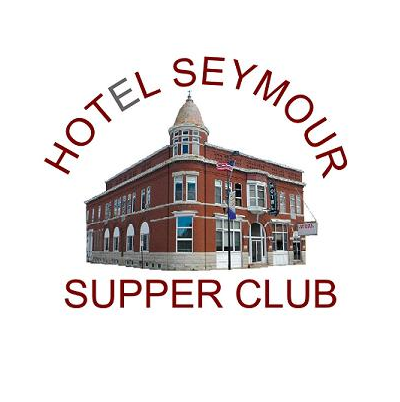The Hotel Seymour Supperclub started in 1898 as the Hotel Falck. It offered rooms along the Green Bay & Western Railroad, and included a barbershop and public showers. While the Hotel Seymour offers a long history and is a fixture here in Seymour, WI, the history of hotels goes back much further. What follows is a brief history of hotels, from the early days of traveler’s inns to the development of the hospitality industry.
The early inns
There has always been money to be made in offering people comfort and luxury. The Greeks offered thermal baths for rest and healing, and the Romans built large mansions for the sole purpose of giving civil servants a place to rest when they traveled on empire business. When the Romans expanded to modern-day England and Switzerland and through north Africa and the Middle East, they introduced their own thermal baths. Middle Eastern caravans used these restful places to take a break on their long journeys.
Religious orders also got in on hospitality. Inns and hospitals were originally run by the church and provided accommodations to pilgrims. Most travelers in the Middle Ages stopped at monasteries and abbeys for a safe place to rest before they continued on.
Inns started emerging near other services, like staging posts and taverns. At first, they did not offer meals, but that service eventually emerged. Many inns offered additional services like stabling and staging posts.
Traveling during the Middle Ages was often dangerous, so travelers continued to demand more options for safety and rest. This allowed inns to gain popularity.
Hotels as industry
Inns were a required service, but not quite an industry. In the early 15th century, that started to change. In France, a new law required inns to keep a register, and the same policy went into effect in England. During that time, more than 600 separate inns were registered in England, and the popularity of thermal spas also grew, showing that hospitality was still a profitable endeavor.
This was the beginning of a hotel industry, and by the time the 1600s began, the first stagecoaches helped travelers find inns. Hotels were often mixed-use buildings—along with rooms, food and baths, there were also boutiques, offices and apartments.
When the Industrial Revolution started, this trend only intensified. Hotels were established in city centers and became destinations on their own. The Royal Hotel was completed in the early 1800s, and holiday resorts soon followed, showing the beginning of a tourist industry. Hotels only advanced from here, with the most luxurious among them featuring indoor bathrooms, luggage lifts and, later, gas and electric lights.
In the early 20th century, hotels started featuring central heat, and guests no longer had to buy baskets of wood from the hotels. Luxuries continued to develop, and included spas and robust interior design. The 20th century saw the start of many unique and prestigious hotels.
If you want to experience the history of hotels close up, book a dinner at the Hotel Seymour Supperclub. Located in Seymour, WI, we offer a diverse menu and live music every Friday night. We hope you’ll visit us soon!
